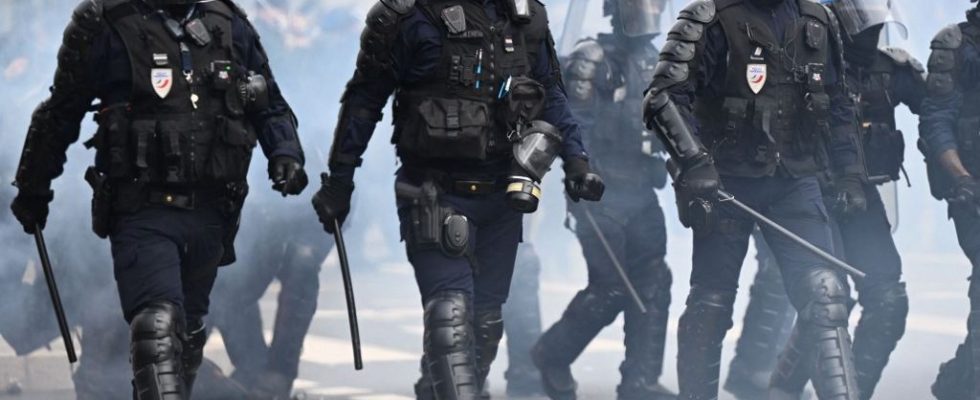“I thought wearing a balaclava was prohibited for the CRS? », tweet@odilev_rv. “They have more and more this tendency not to want to be identifiable and to hide part of their face. Or is the simple scarf not part of the regulatory dress? », interrogates@akril. Since the multiplication of wild demonstrations which followed the use of 49.3 to push through the pension reform, the question has become recurrent on social networks: members of the Republican Security Companies (CRS) and the Intervention Companies (CI) do they have the right to wear a balaclava when they intervene in demonstrations?
The equipment of these companies is rigorously supervised and designed to deal with possible overflows. Helmet with visor, bulletproof vest, protection for arms, shoulders and legs… And the balaclava is one of them. But not just any. “We very often forget that they are, above all, fireproof,” explains Linda Kebbab, police officer and national representative of the SGP Police-FO Unit union. These facial protections were introduced after the attacks on four police officers in 2016 in Viry-Châtillon and after the serious burns of a CRS, targeted by a Molotov cocktail in 2017 in Paris.
Case-by-case use
“The hood is used when there are risks for the agents, explains the trade unionist. When intelligence predicts the arrival of 1,500 ”black blocks”, you have to protect yourself. It is not a luxury in the face of mortar fire and Molotov cocktails”. In February, three police officers were injured in Rennes, one of them seriously, after being targeted by incendiary bombs. And this Friday morning, Gérald Darmanin, the Minister of the Interior, reported 441 police and gendarmes injured on Thursday alone. In Paris, “903 fires of street furniture or garbage cans” have been identified, said the minister.
Why then, is the use of the balaclava in the demonstrations controversial? In addition to the fact that it is prohibited for demonstrators, some see in this use a means used abusively by certain agents to become anonymous. “For this purpose, wearing a hood is not authorized, explains Sebastian Roché, research director at the CNRS and author of Policing in democracy. So, according to national law enforcement plan“the wearing of the hood for the personnel of these units intervening in maintaining order is prohibited, except during a particular threat”, he underlines.
Today, only a few brigades are authorized to permanently wear facial protection to preserve their anonymity: agents of the various intelligence services, those of anti-terrorism or intervention teams like the Raid or the GIGN. For others, it is therefore a case-by-case use.
More tensions, more balaclavas, and vice versa
Linda Kebbab assures her, during the first days of mobilization, relatively calm, the agents did not use their balaclavas. “I covered all the demonstrations in Paris”, insists the policewoman. According to her, it is only more recently that the police have put on their helmets with visors and, for some, their balaclavas. “I was in the streets of Paris on Thursday. It was chaos. It was very difficult to manage. It is no longer maintaining order that must be done, but restoring order, ”slips the policewoman.
However, since the multiplication of wild demonstrations, many videos show very violent charges from the police. Eleven investigations were opened in one week for police violence and entrusted to the IGPN. One of them, for example, follows the complaint of a woman who was beaten with a truncheon during a rally on Monday in the center of Paris. On the video made by an independent reporter, the complainant seemed motionless. Another investigation is aimed at a punch delivered by a police officer in the face of a demonstrator on Monday evening in Paris, widely reported on the internet. In addition, testimonies of arbitrary police custody are increasing.
In the eyes of sociologist Sebastian Roché, the balaclavas are a marker of the lack of dialogue between the demonstrators, the police and the State. “This balaclava depersonalizes law enforcement. We have less the impression of being in front of a human being. We cannot distinguish his facial features, his facial expressions, or his intentions. The CRS then become a sort of symbol of the state, something abstract. And this is not likely to facilitate exchanges, nor to ease tensions”, but rather even, sometimes, to exacerbate them.

